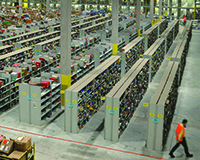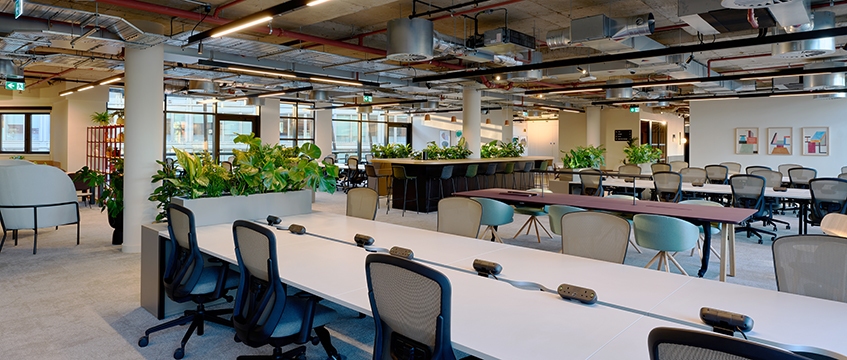Lack of shed space ‘could hit growth’
Without proper government support, the logistics sector will run out of space to support the UK’s burgeoning e-commerce sector, a report has warned.
Addleshaw Goddard’s report, How Soon Is Now? The Future of Logistics, states that to keep up with the pace of online retail growth, 18m sq ft of logistics space needs to be built annually.
With only 3.5m sq ft of space projected to be built over the next 12 months, radical measures are needed to unlock land and speed up delivery, the report adds.
Without proper government support, the logistics sector will run out of space to support the UK’s burgeoning e-commerce sector, a report has warned.
Addleshaw Goddard’s report, How Soon Is Now? The Future of Logistics, states that to keep up with the pace of online retail growth, 18m sq ft of logistics space needs to be built annually.
With only 3.5m sq ft of space projected to be built over the next 12 months, radical measures are needed to unlock land and speed up delivery, the report adds.
Proposals include calling on councils to hand over more land for industrial use, instead of prioritising housing; streamlining local planning systems, to empower the fast-tracking of uncontroversial applications; and establishing funding to assist industrial developers with the remediation of land.
The UK has become a crucible for the fast-growing trend towards instant delivery. With an online retail penetration rate far higher than in other European countries, helped along by widespread Smartphone, 4G and Wi-Fi access, Britain is home to consumers more likely to be online and be within easy reach for delivery.
As of August 2016, online sales constituted 14.3% of all UK retail sales, and are projected to grow to 21.5% by the end of the decade.
The report says a change in occupier preferences has taken place, with four times as much take-up in 2015 being built bespoke to the occupier’s requirements. Occupiers are increasingly looking for bigger sheds, both to future-proof their operations and drive economies of scale.
In the first half of 2016, five deals were made for sheds of more than 500,000 sq ft, compared with a long-term average of seven 500,000+ sq ft deals a whole year.
Smaller, cheaper multi-let industrial properties have an increasing appeal. With low capital values, relative to floor space, that are mostly below rebuild costs; low refurbishment costs, given their simple construction; and a broad base of potential occupiers, they are often viewed as lower risk than other asset classes.
Jonathan Powling, partner at Addleshaw Goddard, said: “Our economy is dependent on industrial property and warehousing, well funded road and rail networks, and a tax system that encourages investment. While it is vital that there are sufficient homes for our growing population, the need for industrial space must not be overlooked purely because it is not seen as a short-term vote winner.
“There needs to be a greater understanding that industrial property creates jobs, which are increasingly high-skilled as a result of the leaps in technology the sector has seen in recent years.”
• To send feedback, e-mail amber.rolt@estatesgazette.com or tweet @amberrolt or @estatesgazette











